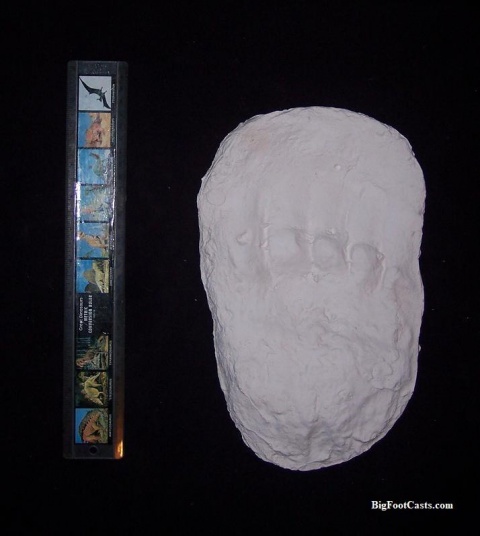(Cast) 1996 Bigfoot half track (Paul Freeman and Jeff Meldrum)
This is a half of a Bigfoot footprint discovered by Paul Freeman at Mill Creek, in Louisiana, USA on February 18, 1996.
This cast was part of a larger trackway discovered by Paul Freeman. When Jeff Meldrum stopped by Freemans house for a visit, Freeman showed Meldrum a new series of track that he had found. Freeman had chosen not to make casts of the tracks because he thought they were inferior to other tracks he had discovered previously.
Meldrum noticed a half-cast showing distinct toe-slides.
"The marginal toes had impressed into the side walls of the track, showing indications of the toe segments. There were three toe segments on the outside of the foot, but only two corresponding to the big toe; a subtle anatomical feature not likely known by Freeman if he were to fake tracks like this." Cliff Barackman.
This speaks greatly to the authenticity of these tracks as having been made by a real yet unknown creature.
Jeff Meldrum on the half track:
"Evidence of a Mid-tarsal Break Perhaps the most significant observation relating to this trackway was the evidence of a pronounced flexibility in the mid-tarsal joint. Several examples of midfoot pressure ridges indicate a greater range of flexion at the transverse tarsal joint than permitted in the normal human tarsus. This is especially manifest in the footprint figured below, in which a heel impression is absent. Evidently, the hindfoot was elevated at the time of contact by the midfoot. Due to the muddy conditions, the foot slipped backward, as indicated by the toe slide-ins, and a ridge of mud was pushed up behind the mid-tarsal region."
Foothills of the Blue Mountains outside of Five Points, WA
